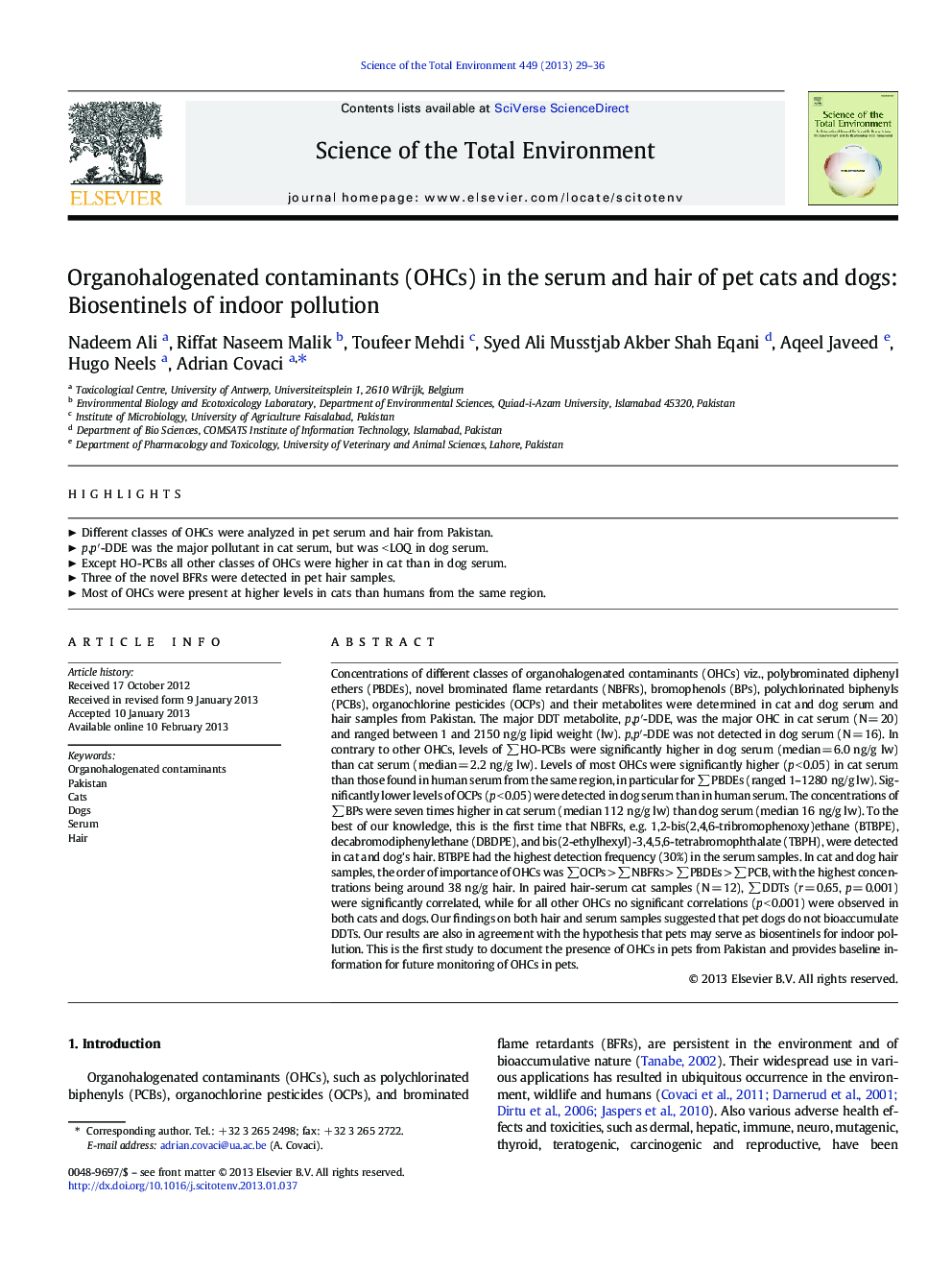| کد مقاله | کد نشریه | سال انتشار | مقاله انگلیسی | نسخه تمام متن |
|---|---|---|---|---|
| 4428838 | 1619805 | 2013 | 8 صفحه PDF | دانلود رایگان |

Concentrations of different classes of organohalogenated contaminants (OHCs) viz., polybrominated diphenyl ethers (PBDEs), novel brominated flame retardants (NBFRs), bromophenols (BPs), polychlorinated biphenyls (PCBs), organochlorine pesticides (OCPs) and their metabolites were determined in cat and dog serum and hair samples from Pakistan. The major DDT metabolite, p,p′-DDE, was the major OHC in cat serum (N = 20) and ranged between 1 and 2150 ng/g lipid weight (lw). p,p′-DDE was not detected in dog serum (N = 16). In contrary to other OHCs, levels of ∑HO-PCBs were significantly higher in dog serum (median = 6.0 ng/g lw) than cat serum (median = 2.2 ng/g lw). Levels of most OHCs were significantly higher (p < 0.05) in cat serum than those found in human serum from the same region, in particular for ∑PBDEs (ranged 1–1280 ng/g lw). Significantly lower levels of OCPs (p < 0.05) were detected in dog serum than in human serum. The concentrations of ∑BPs were seven times higher in cat serum (median 112 ng/g lw) than dog serum (median 16 ng/g lw). To the best of our knowledge, this is the first time that NBFRs, e.g. 1,2-bis(2,4,6-tribromophenoxy)ethane (BTBPE), decabromodiphenylethane (DBDPE), and bis(2-ethylhexyl)-3,4,5,6-tetrabromophthalate (TBPH), were detected in cat and dog's hair. BTBPE had the highest detection frequency (30%) in the serum samples. In cat and dog hair samples, the order of importance of OHCs was ∑OCPs > ∑NBFRs > ∑PBDEs > ∑PCB, with the highest concentrations being around 38 ng/g hair. In paired hair-serum cat samples (N = 12), ∑DDTs (r = 0.65, p = 0.001) were significantly correlated, while for all other OHCs no significant correlations (p < 0.001) were observed in both cats and dogs. Our findings on both hair and serum samples suggested that pet dogs do not bioaccumulate DDTs. Our results are also in agreement with the hypothesis that pets may serve as biosentinels for indoor pollution. This is the first study to document the presence of OHCs in pets from Pakistan and provides baseline information for future monitoring of OHCs in pets.
► Different classes of OHCs were analyzed in pet serum and hair from Pakistan.
► p,p′-DDE was the major pollutant in cat serum, but was < LOQ in dog serum.
► Except HO-PCBs all other classes of OHCs were higher in cat than in dog serum.
► Three of the novel BFRs were detected in pet hair samples.
► Most of OHCs were present at higher levels in cats than humans from the same region.
Journal: Science of The Total Environment - Volume 449, 1 April 2013, Pages 29–36